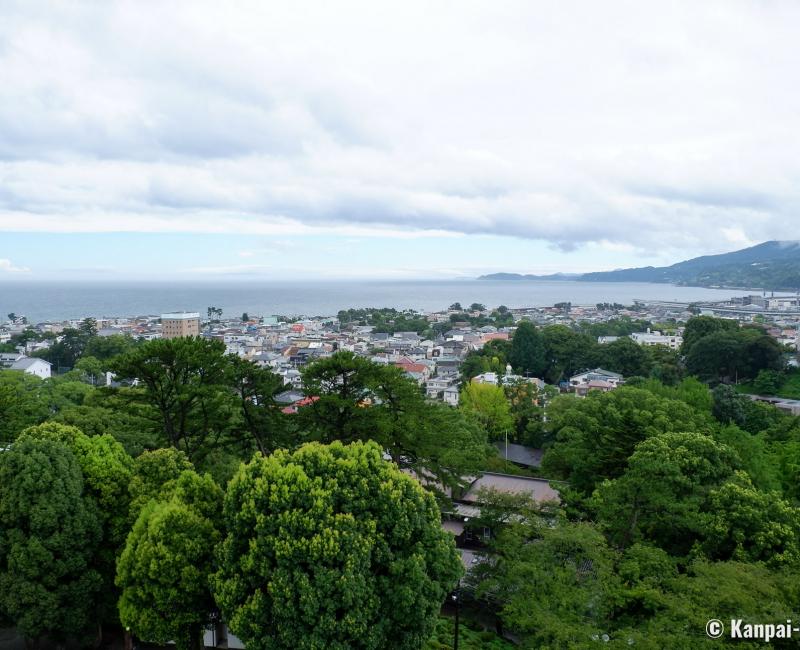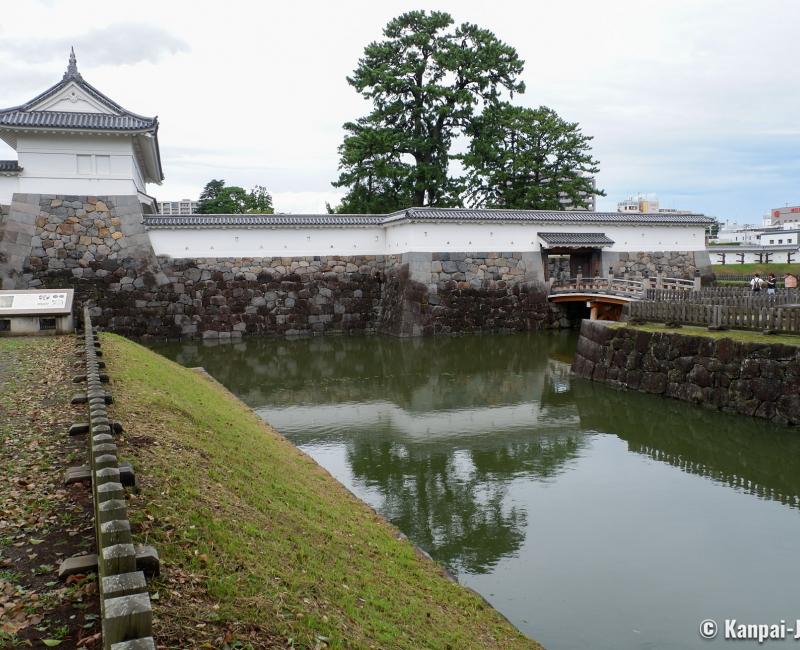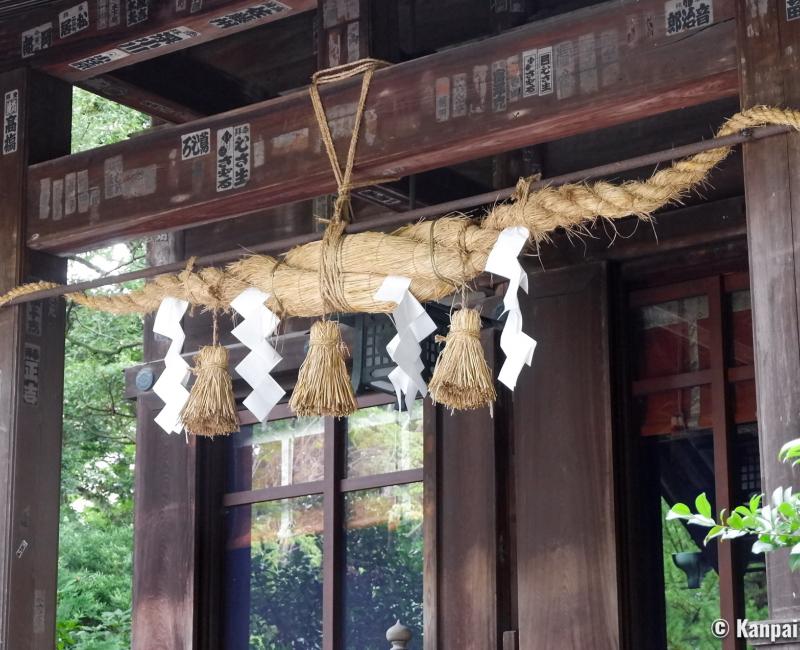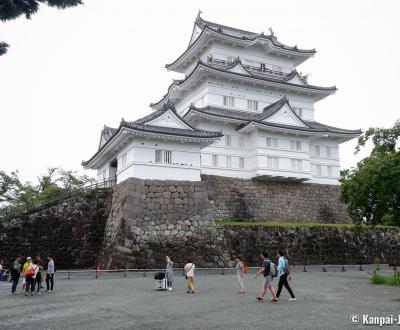Odawara Castle
The Beautiful Reconstruction of a Former Feudal Domain
Odawara Castle is a fortified monument located in the eponymous city in Kanagawa prefecture, south-west to Tokyo and stands out as the gem of the area. Its large, flowered park, of which some trees were designated natural monuments, is dotted with the main keep, two museums, several bridges and moats constituting a pleasant discovery especially on a family trip.
Odawara Castle 🏯’s origins are unclear, but they are said to date back to 1417 when the Omori clan ruled over the former province of Suruga (present day’s Shizuoka). The very powerful Go-Hojo clan seized the castle in 1495 and developed it over the following century. Thanks to various improvements, it withstood two important sieges during the last part of Sengoku period:
- The siege of 1561 by daimyo Uesugi Kenshin; and,
- The siege of 1569 by daimyo Takeda Shingen.
However, it fell at the third siege in 1590, led by Toyotomi Hideyoshi, one of the three unifiers of Japan: the Go-Hojo clan surrendered due to lack of food supply.
The castle was then transferred successively to several lords during the Tokugawa shogunate, and was heavily damaged by two great earthquakes in 1782 and 1853. The final blow came in 1870 during the Meiji revolution, when the new imperial power ordered the dismantlement of all feudal strongholds.
Okubo-jinja Shinto shrine was then built on the keeps’ foundations, and an Imperial Villa as well in the castle’s grounds, that was destroyed by the 1923 Great Kanto Earthquake. It was not before 1930 that reconstruction works began, and the site was designated "National Historic Site" in 1938.

The keep, an excellent vantage point on the city
Why not start the visit of the domain by Tenshu, the main keep? While it was reconstructed in 1960, the building does not fail to impress from its base, where start the first stone stairways to its entrance.
A pleasant museum was arranged inside the keep, to provide a better understanding of the place’s history, but without too great lengths. The good surprise is mainly the observatory located at the upper floor, about sixty meters above sea level, with a 360 degrees outdoor view. Note that the space is narrow, and it is necessary to follow the walking direction so as to not inconvenience the other visitors.
From there unfolds an unobstructed view on Sagami Bay, the neighboring mountains of Hakone and on Odawara city and its beaches 🏖 below. A little shop, conveniently placed before the exit, displays souvenirs to buy.

In Odawara Castle, history is also an opportunity for fun, with entertainments possibilities for the whole family, from the youngest to the eldest:
- Tokiwagi Gate, was the former main entrance of the central courtyard. Rebuilt in 1971, it includes a small samurai museum, a costume rental shop to dress as a ninja, or with feudal warriors armors and kimono,
- Rekishi Kenbunkan Museum, nearby, in the former Ninomaru ward, is dedicated to the ninjas.
Lastly, the whole park surrounding the castle offers a gust of fresh air in an exciting scenery. Its small gardens, huge moats, bridges and impressive gates such as Umadashi gate (rebuilt in 2009) and Akagane gate (rebuilt in 1997) allow to enjoy even more this place laden with history. On a side note, many sakura 🌸 cherry trees embellish the landscape each spring. Thanks to all these developments, the castle was listed 23rd on the "Japan’s Top 100 Castles" (Nihon Hyaku Meijo) in 2006.

The shrine dedicated to Ninomiya Sontoku
A few dozen meters south to the keep, stands Hotoku Ninomiya shrine. Built in 1894, it worships Ninomiya Sontoku (1787-1856), who was born in the area in the farmer’s class. The archetypal autodidact, he succeeded to reach a higher social status thanks to his hard work. He was an important agrarian reformist and economist of the Edo period, and contributed to the wealth of Odawara fiefdom.
The entrance of the shrine is of a remarkable sobriety, with a raw wood torii ⛩️ gate, near the lotus pond Hasuike, and does not give away the beauties it shelters:
- The main hall Honden where people pray, was left in the wood’s natural color and a huge Shimenawa sacred cord is hanging above its entrance,
- The small sacred pond Kami Ike is inhabited by carps that can be fed, but only with the food sold on site,
- The statue of Ninomiya Sontoku, standing near the ema votive plates, depicts the man as the popular stories described him in his youth: immersed in reading, taking any occasion to learn, even during the wood collection chore.
Isolated from the city and the surrounding park, amid a quiet and lush vegetation, Hotoku Ninomiya shrine is a perfect complement to Odawara Castle’s visit.

